实验5:开源控制器实践——POX
一、实验目的
1.能够理解 POX 控制器的工作原理;
2.通过验证POX的forwarding.hub和forwarding.l2_learning模块,初步掌握POX控制器的使用方法;
3.能够运用 POX控制器编写自定义网络应用程序,进一步熟悉POX控制器流表下发的方法。
二、实验环境
Ubuntu 20.04 Desktop amd64
三、实验要求
(一)基本要求
1.搭建下图所示SDN拓扑,协议使用Open Flow 1.0,控制器使用部署于本地的POX(默认监听6633端口)
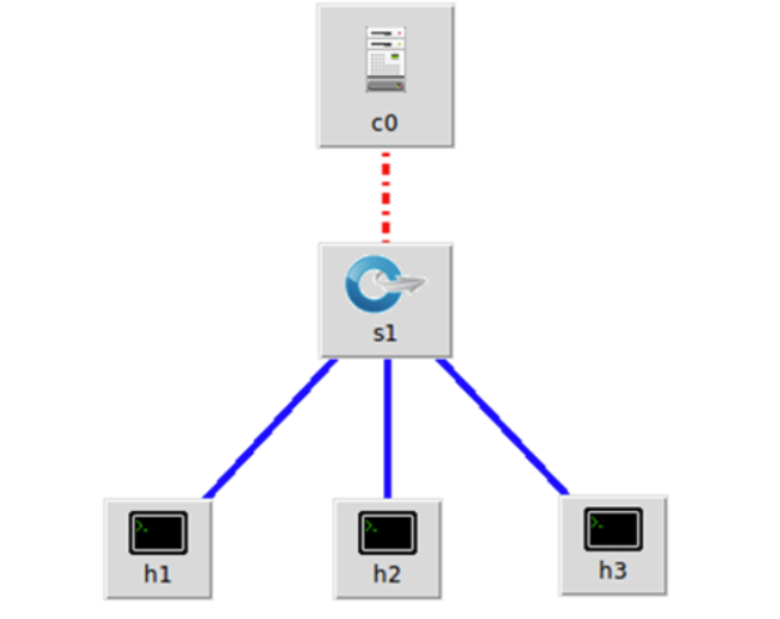
2.使用 tcpdump 验证Hub模块
-
h1 ping h2
![]()
-
h1 ping h3
![]()
-
L2_learning模块代码流程图
![]()
3.使用 tcpdump 验证Switch模块
- h1 ping h2
- h1 ping h3
![]()
(二)进阶要求
1.重新搭建(一)的拓扑,此时交换机内无流表规则,拓扑内主机互不相通;编写Python程序自定义一个POX模块SendFlowInSingle3,并且将拓扑连接至SendFlowInSingle3(默认端口6633),实现向s1发送流表规则使得所有主机两两互通。
点击查看代码
from pox.core import core
import pox.openflow.libopenflow_01 as of
class SendFlowInSingle3(object):
def __init__ (self):
core.openflow.addListeners(self)
def _handle_ConnectionUp(self, event):
msg = of.ofp_flow_mod()
msg.priority = 1
msg.match.in_port = 1
msg.actions.append(of.ofp_action_output(port=2))
msg.actions.append(of.ofp_action_output(port=3))
event.connection.send(msg)
msg = of.ofp_flow_mod()
msg.priority = 1
msg.match.in_port = 2
msg.actions.append(of.ofp_action_output(port=1))
msg.actions.append(of.ofp_action_output(port=3))
event.connection.send(msg)
msg = of.ofp_flow_mod()
msg.priority = 1
msg.match.in_port = 3
msg.actions.append(of.ofp_action_output(port=1))
msg.actions.append(of.ofp_action_output(port=2))
event.connection.send(msg)
def launch():
core.registerNew(SendFlowInSingle3)


2.基于进阶1的代码,完成ODL实验的硬超时功能。
点击查看代码
from pox.core import core
import pox.openflow.libopenflow_01 as of
class SendFlowInSingle3(object):
def __init__(self):
core.openflow.addListeners(self)
def _handle_ConnectionUp(self, event):
msg = of.ofp_flow_mod() # 使用ofp_flow_mod()方法向交换机下发流表
msg.priority = 1
msg.match.in_port = 1 # 使数据包进入端口1
msg.actions.append(of.ofp_action_output(port=2)) # 从端口2转发出去
msg.actions.append(of.ofp_action_output(port=3)) # 从端口3转发出去
event.connection.send(msg)
msg = of.ofp_flow_mod() # 使用ofp_flow_mod()方法向交换机下发流表
msg.priority = 1
msg.match.in_port = 2 # 使数据包进入端口2
msg.actions.append(of.ofp_action_output(port=1)) # 从端口1转发出去
msg.actions.append(of.ofp_action_output(port=3)) # 从端口3转发出去
event.connection.send(msg)
msg = of.ofp_flow_mod() # 使用ofp_flow_mod()方法向交换机下发流表
msg.priority = 1
msg.match.in_port = 3 # 使数据包进入端口3
msg.actions.append(of.ofp_action_output(port=1)) # 从端口1转发出去
msg.actions.append(of.ofp_action_output(port=2)) # 从端口2转发出去
event.connection.send(msg)
def launch():
core.registerNew(SendFlowInSingle3)
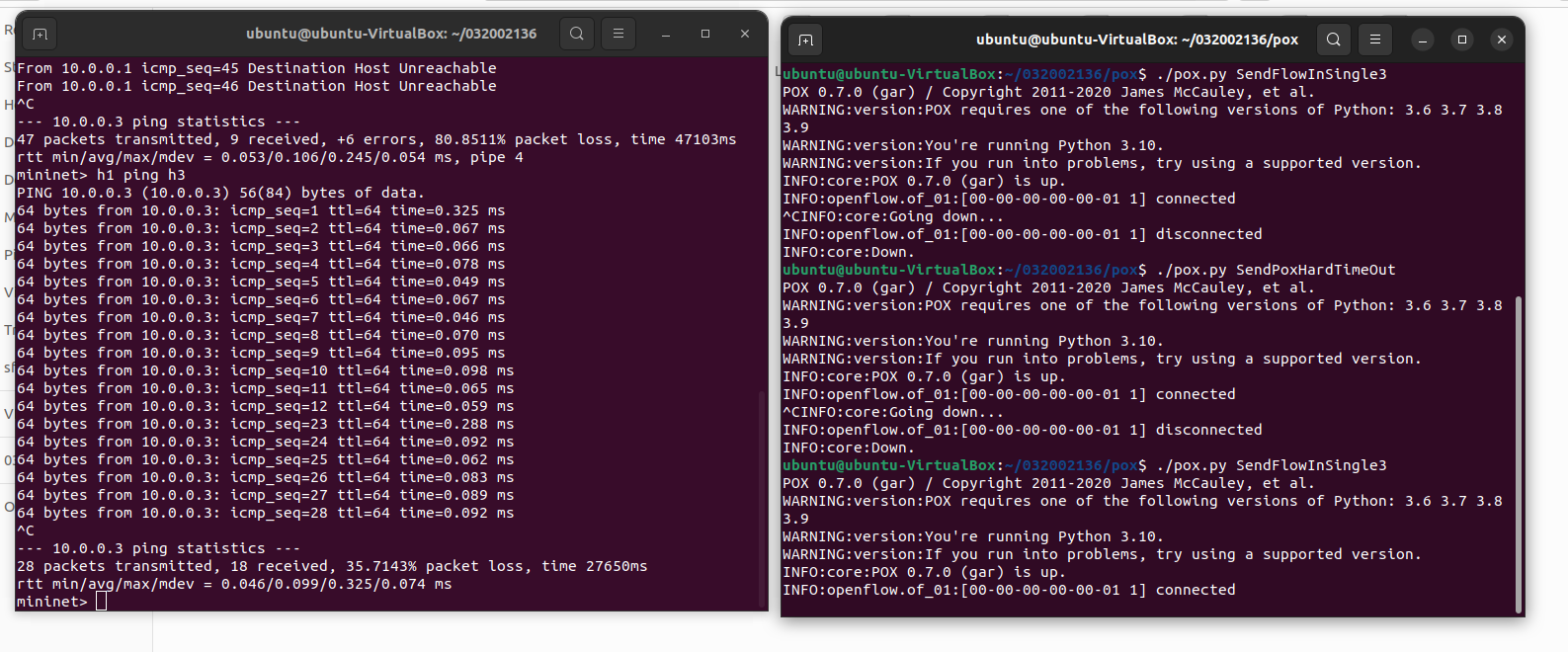
四.个人总结
- 本次实验难度较大,进阶的流表编写有较大难度,Hub模块和Switch模块的理解相对而言较为容易。
- 遇到的问题:forwarding.SendFlowInSingle3命令,终端提示找不到相应的py文件。仔细检查后,发现自定义模块的py文件文件名命名有问题,改为SendFlowInSingle3.py后,自定义POX模块运行成功。
- 本次实验掌握了pox控制器的使用方法,学到了POX控制器流表下发的方法,学习了Hub模板和Switch模板。


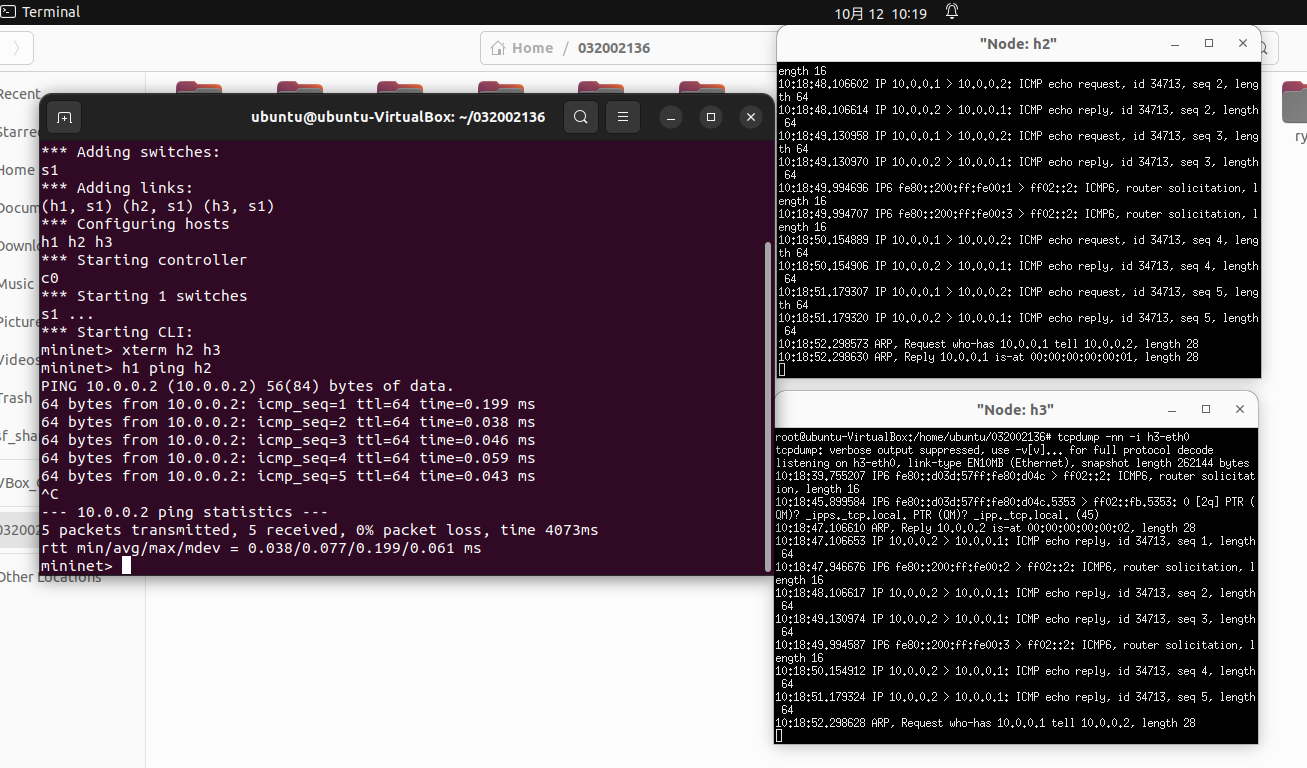
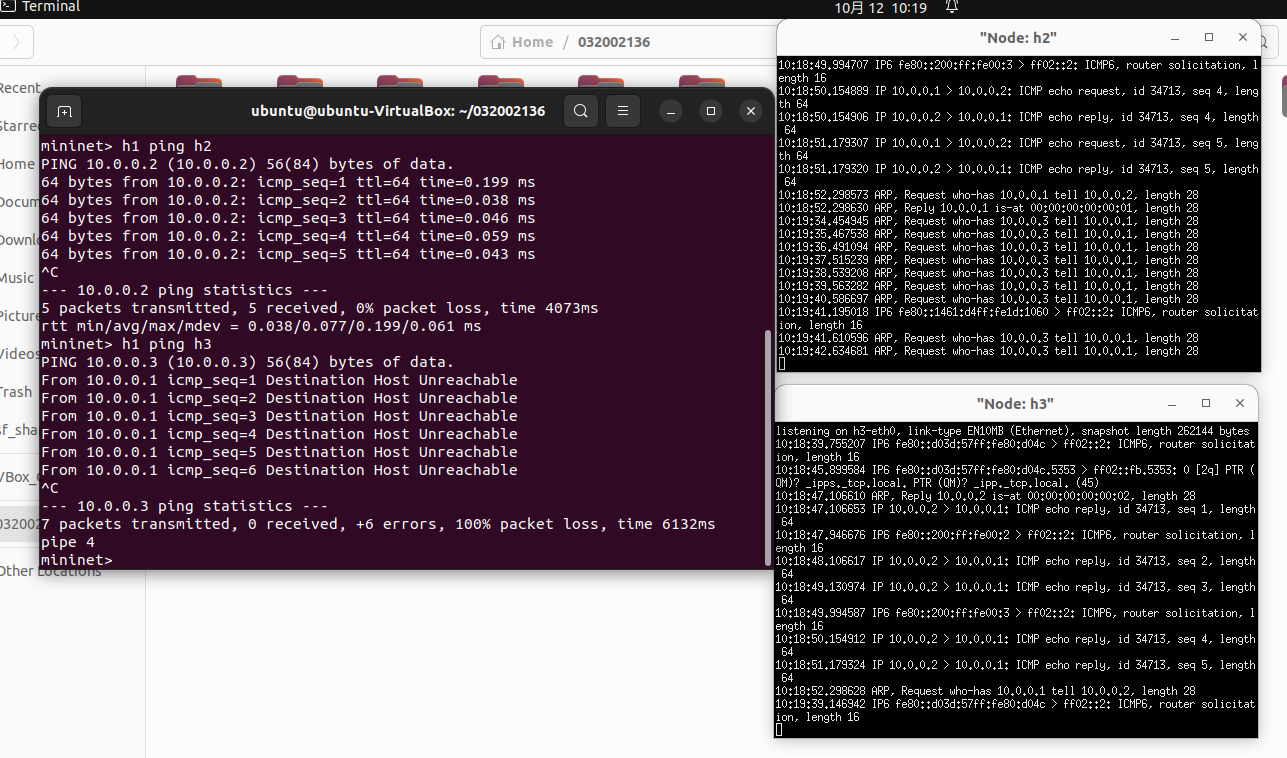
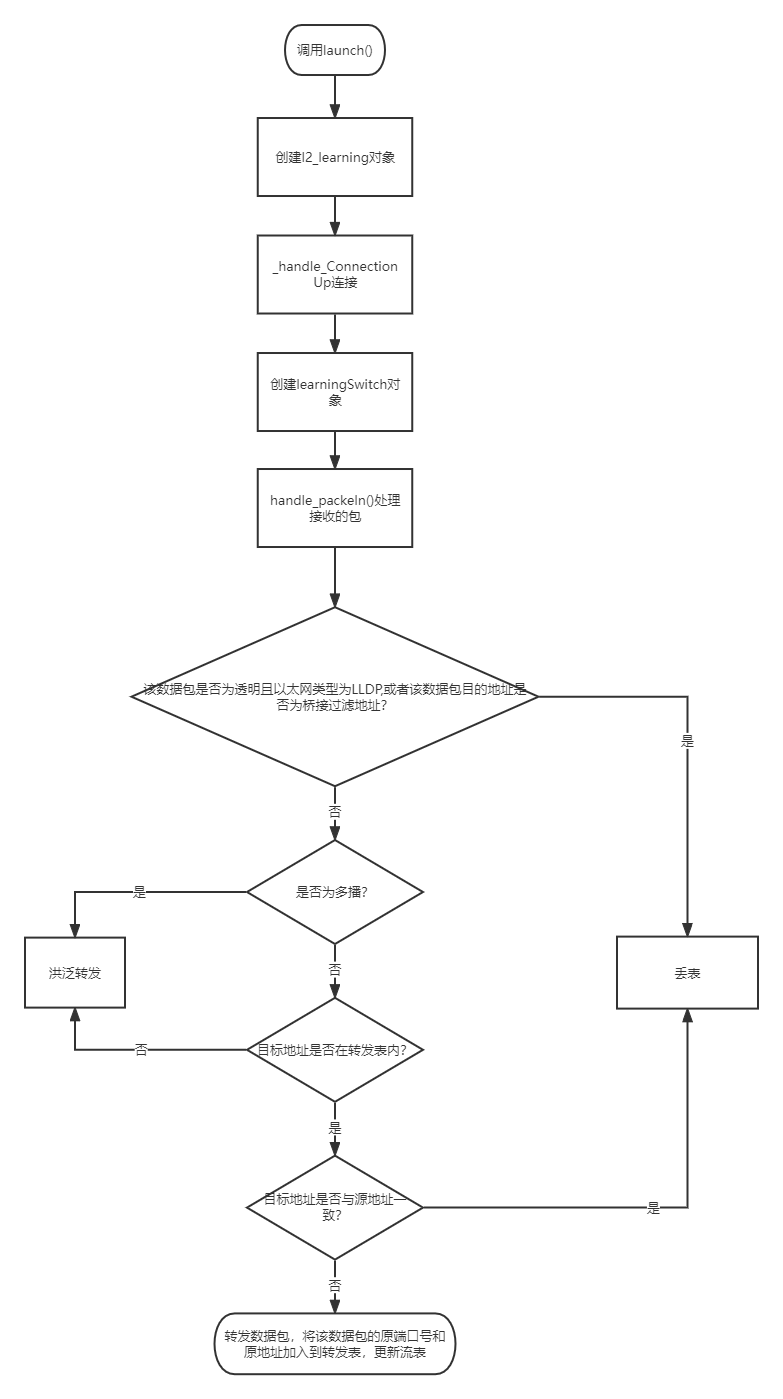
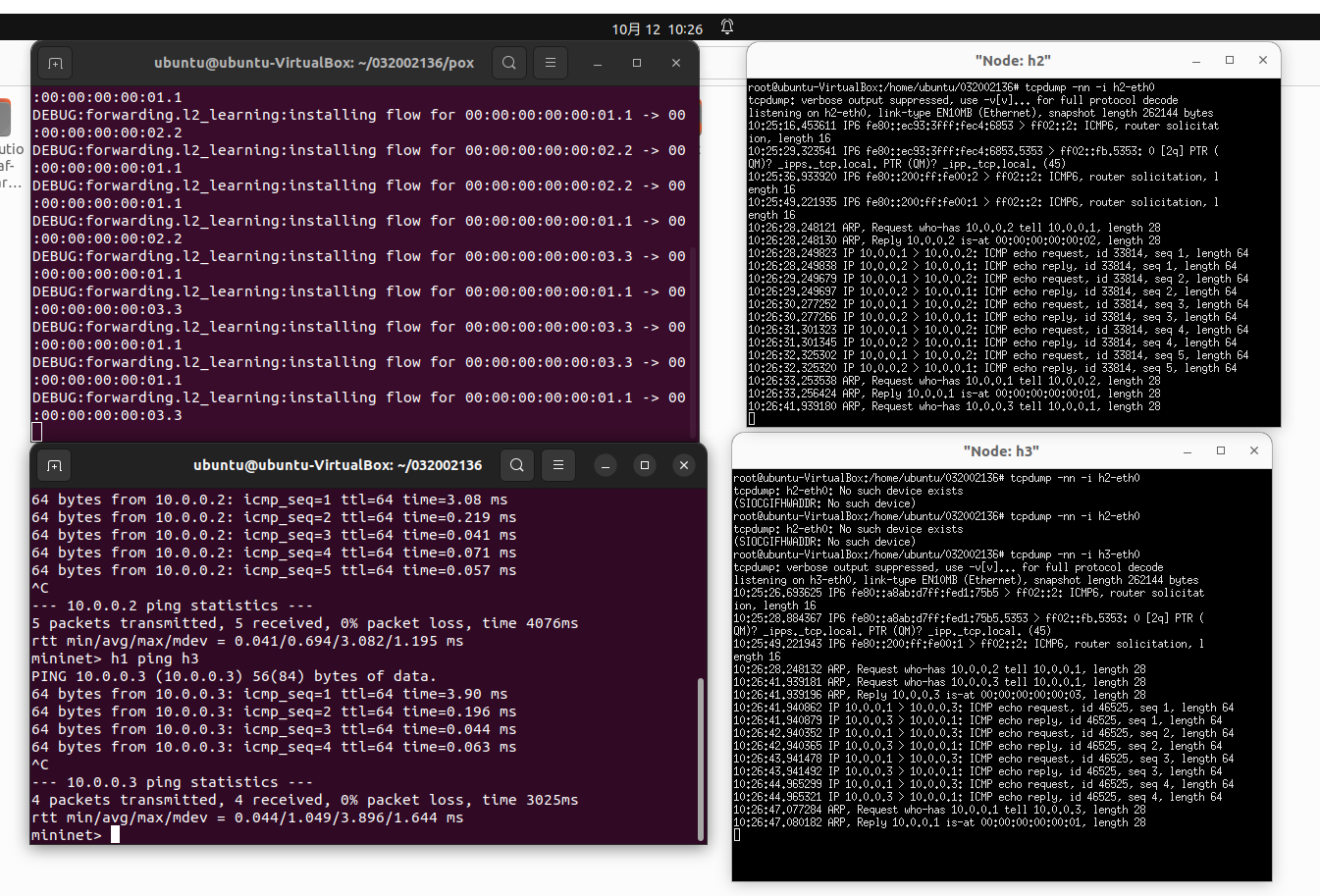

 浙公网安备 33010602011771号
浙公网安备 33010602011771号